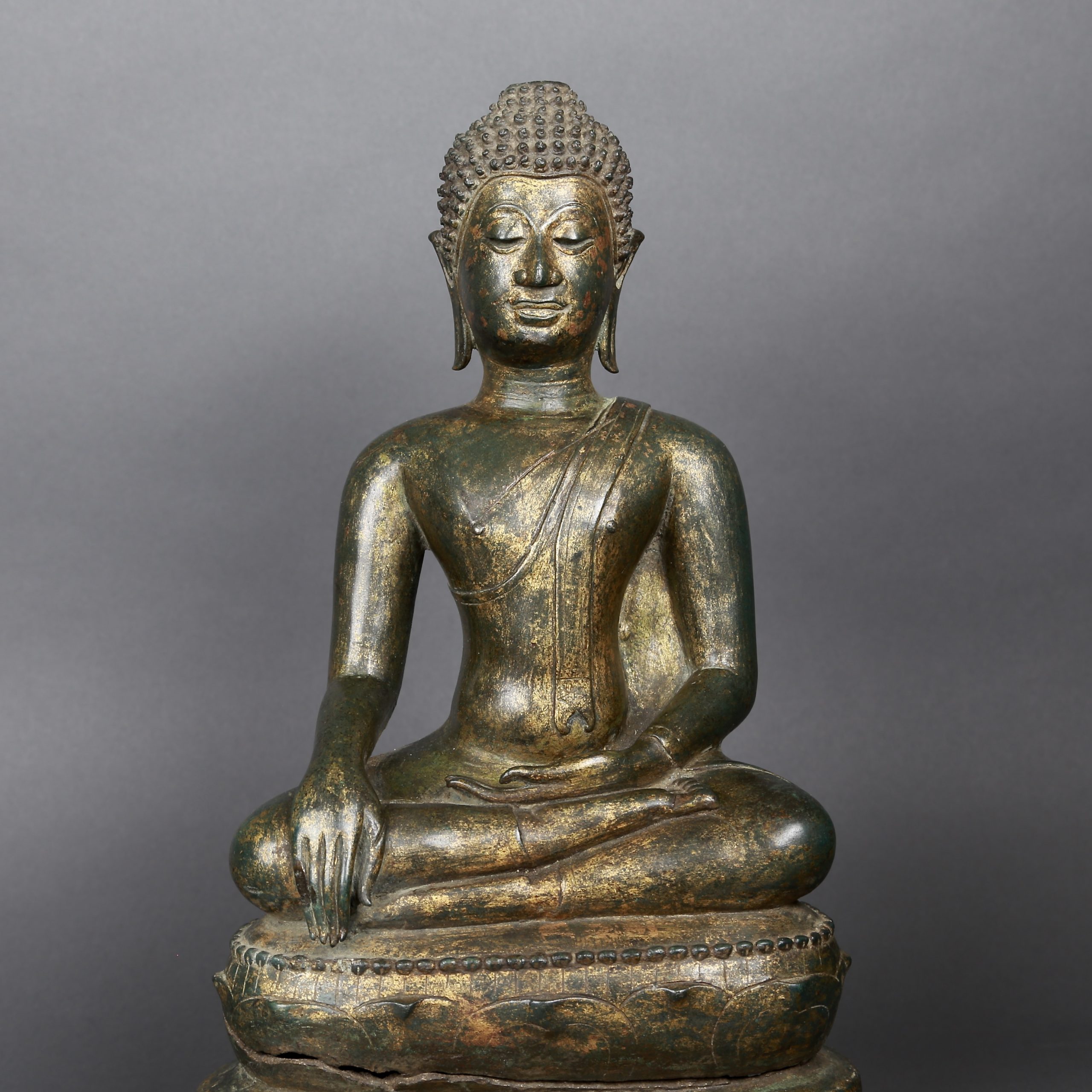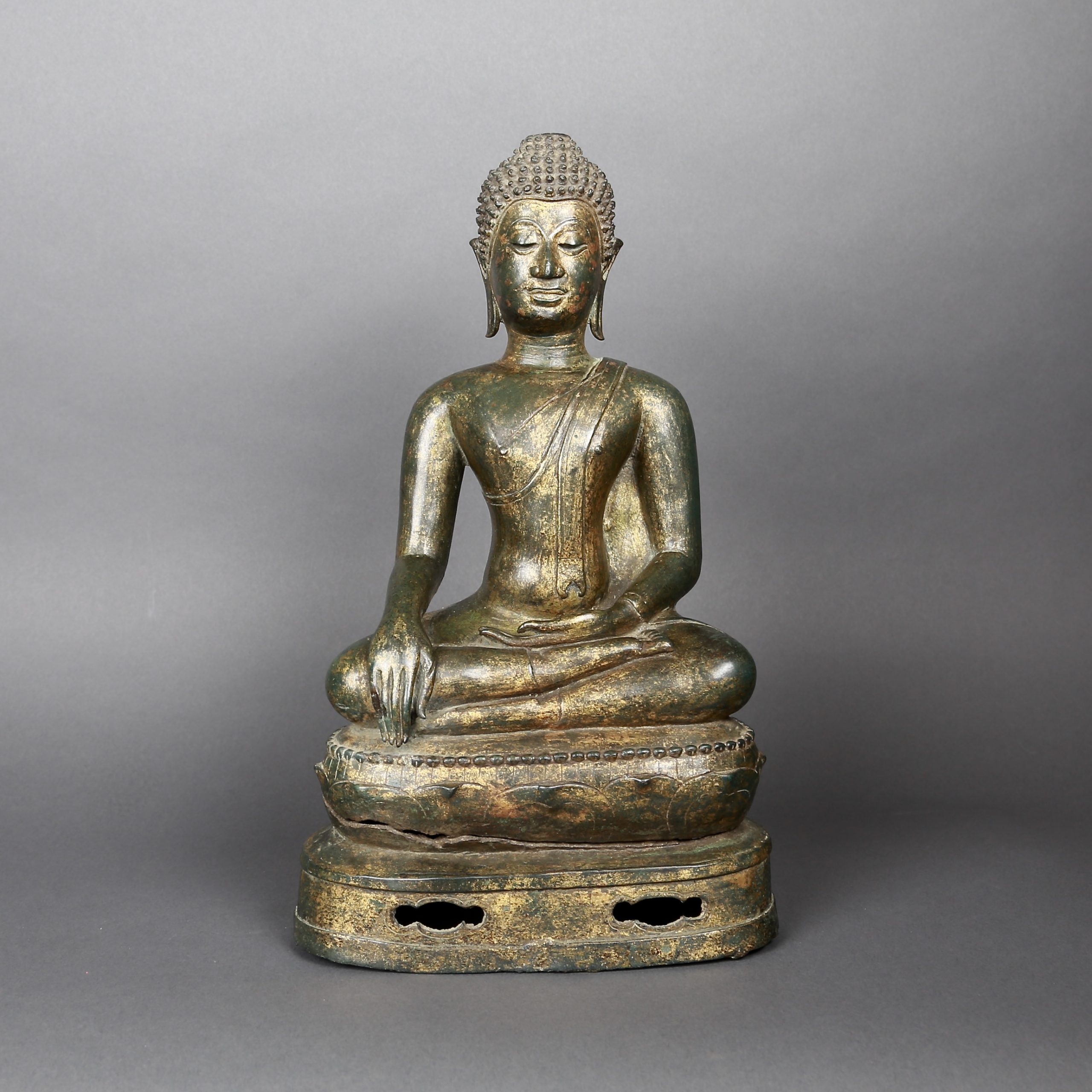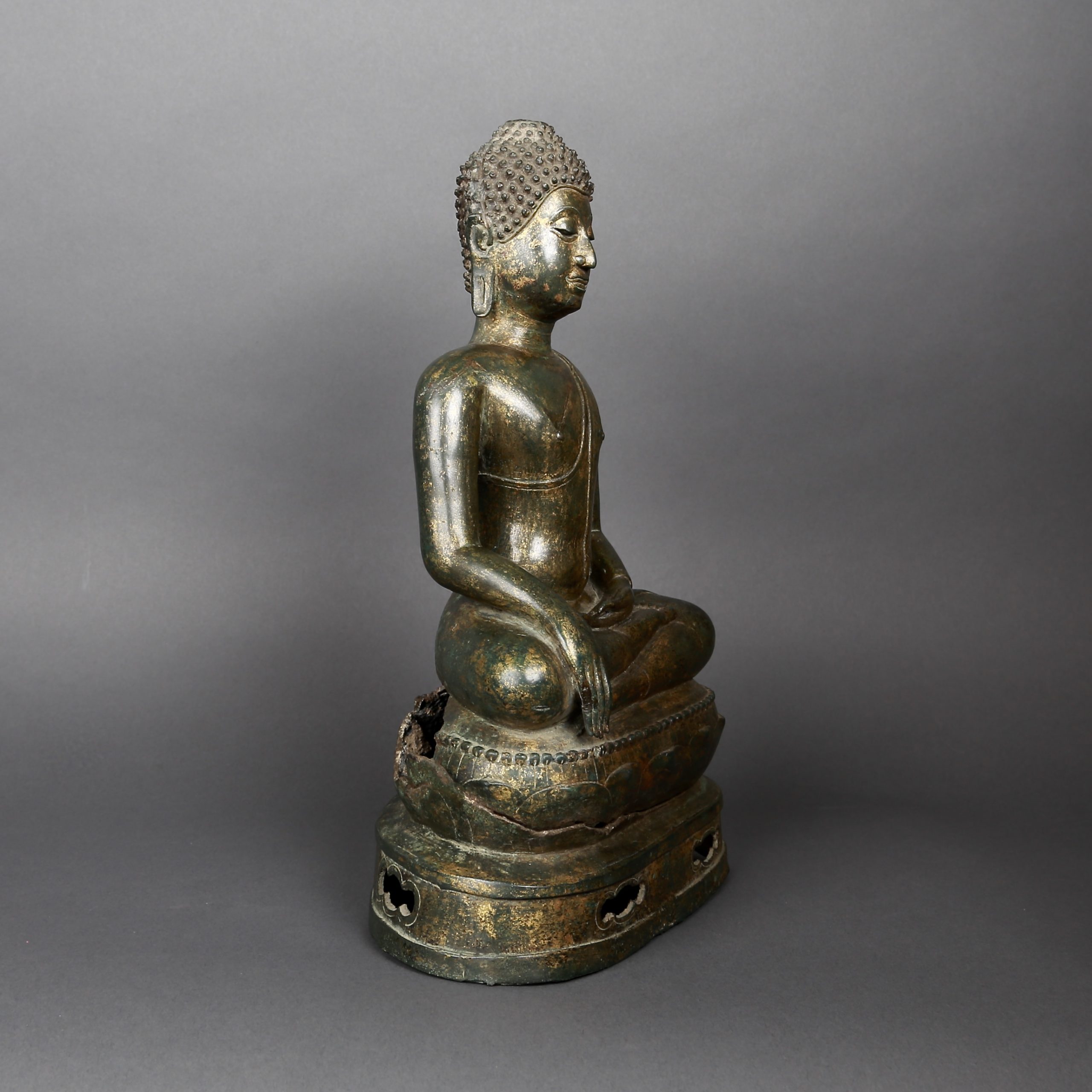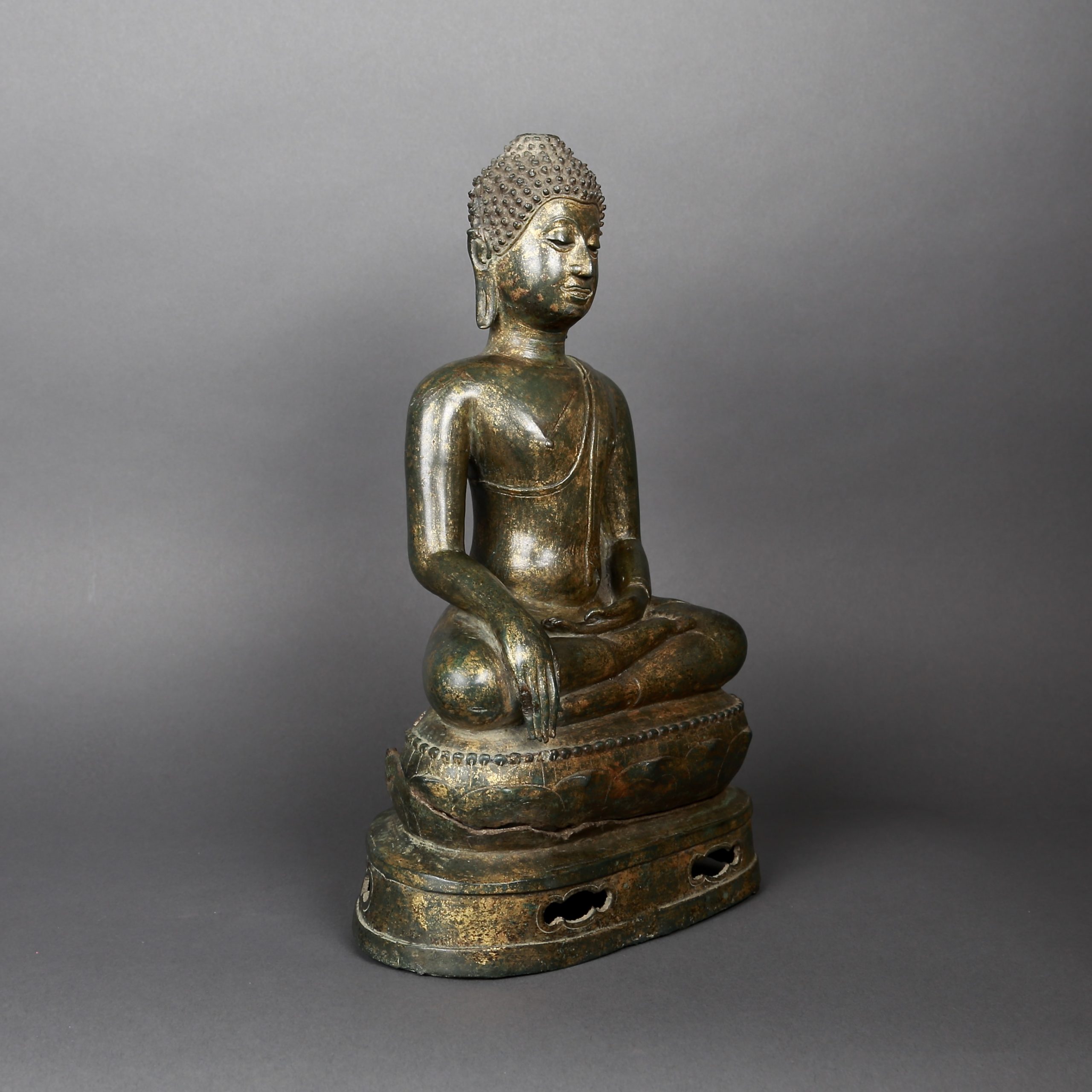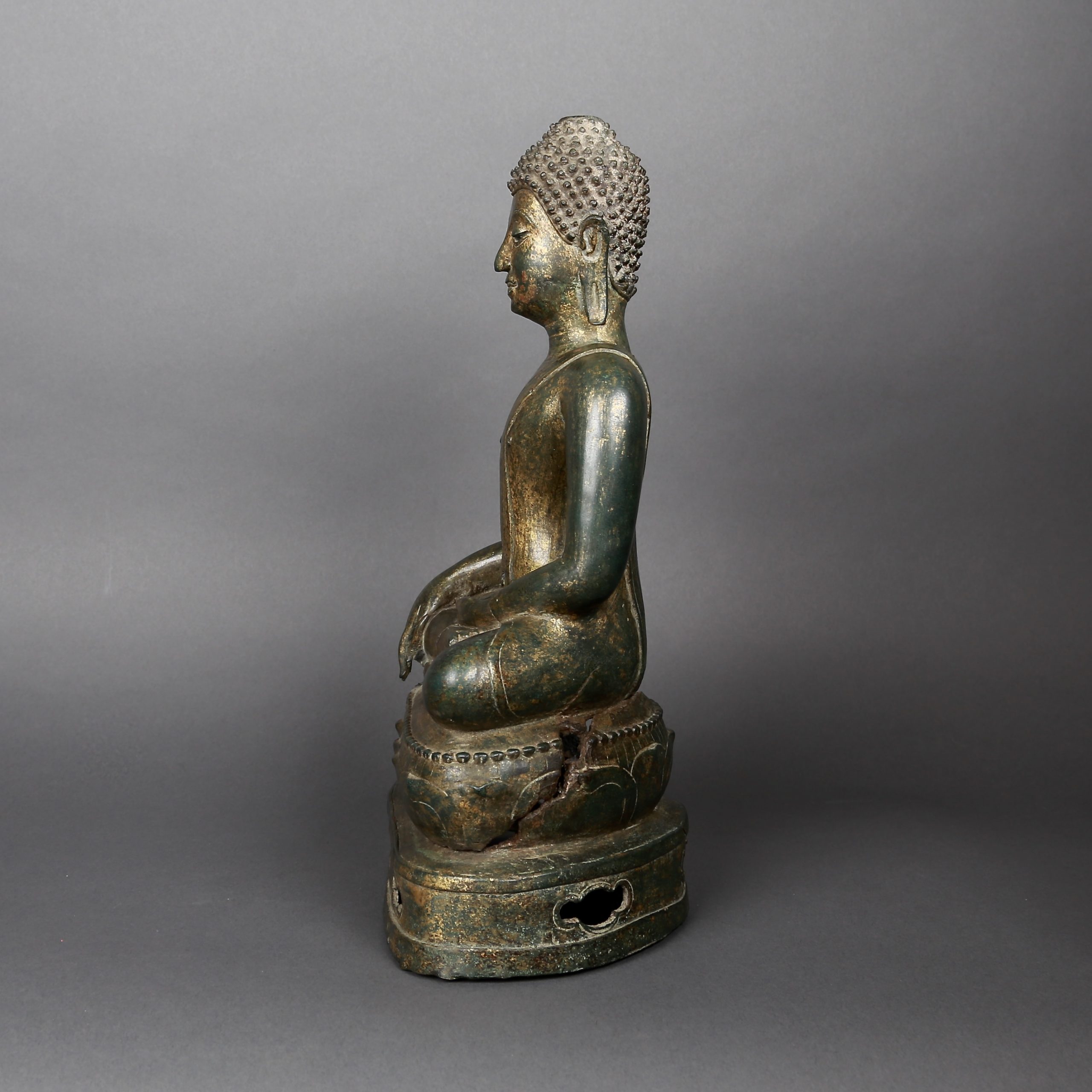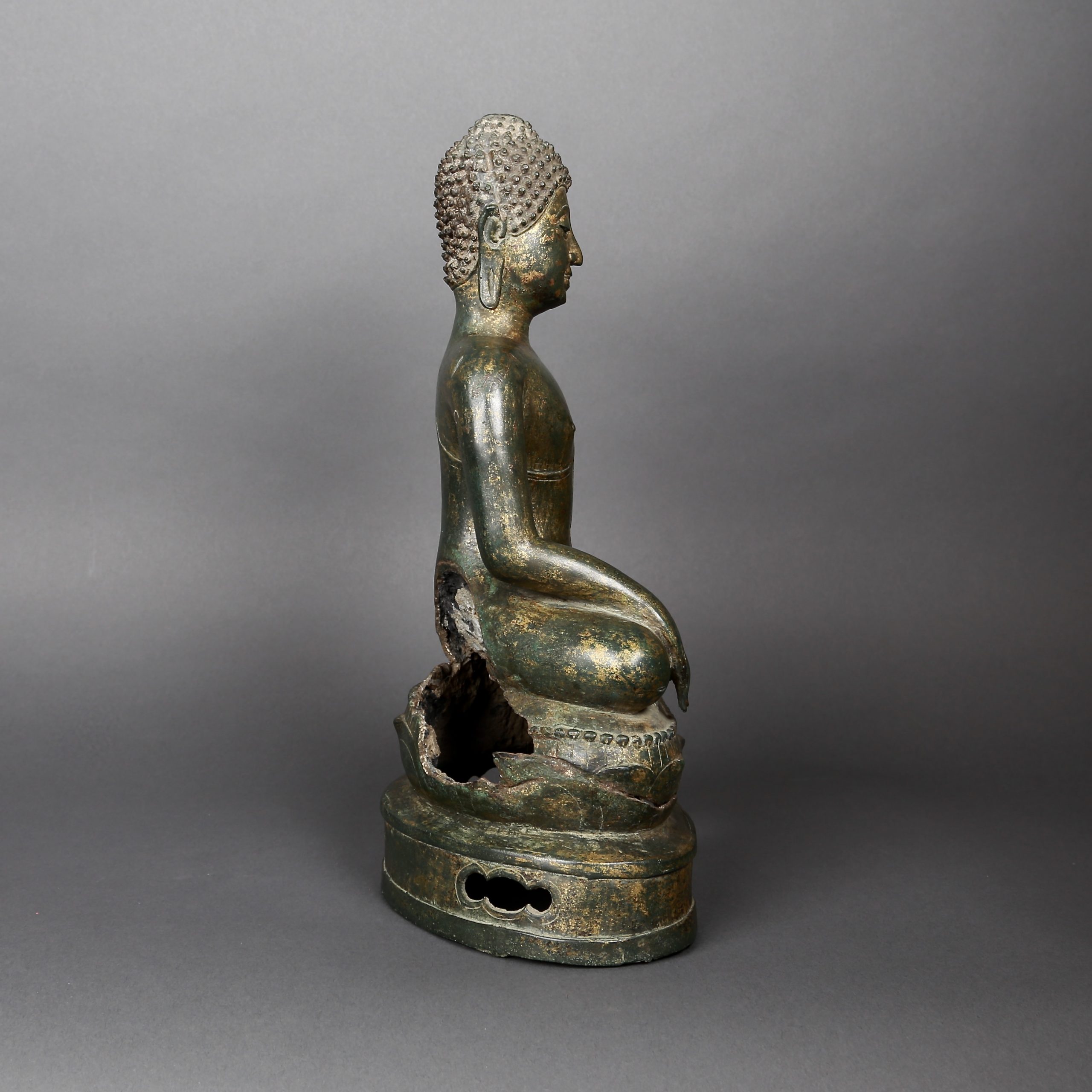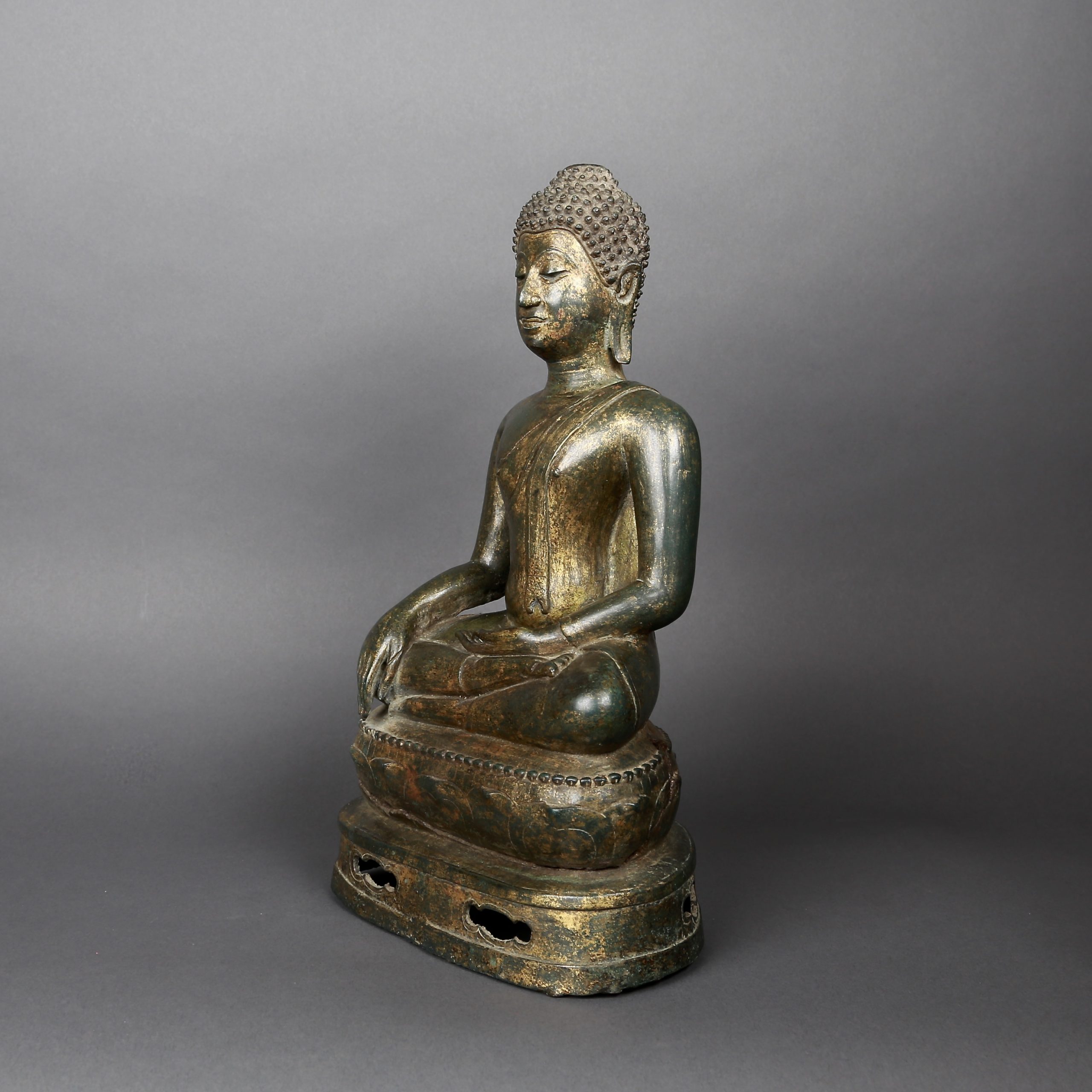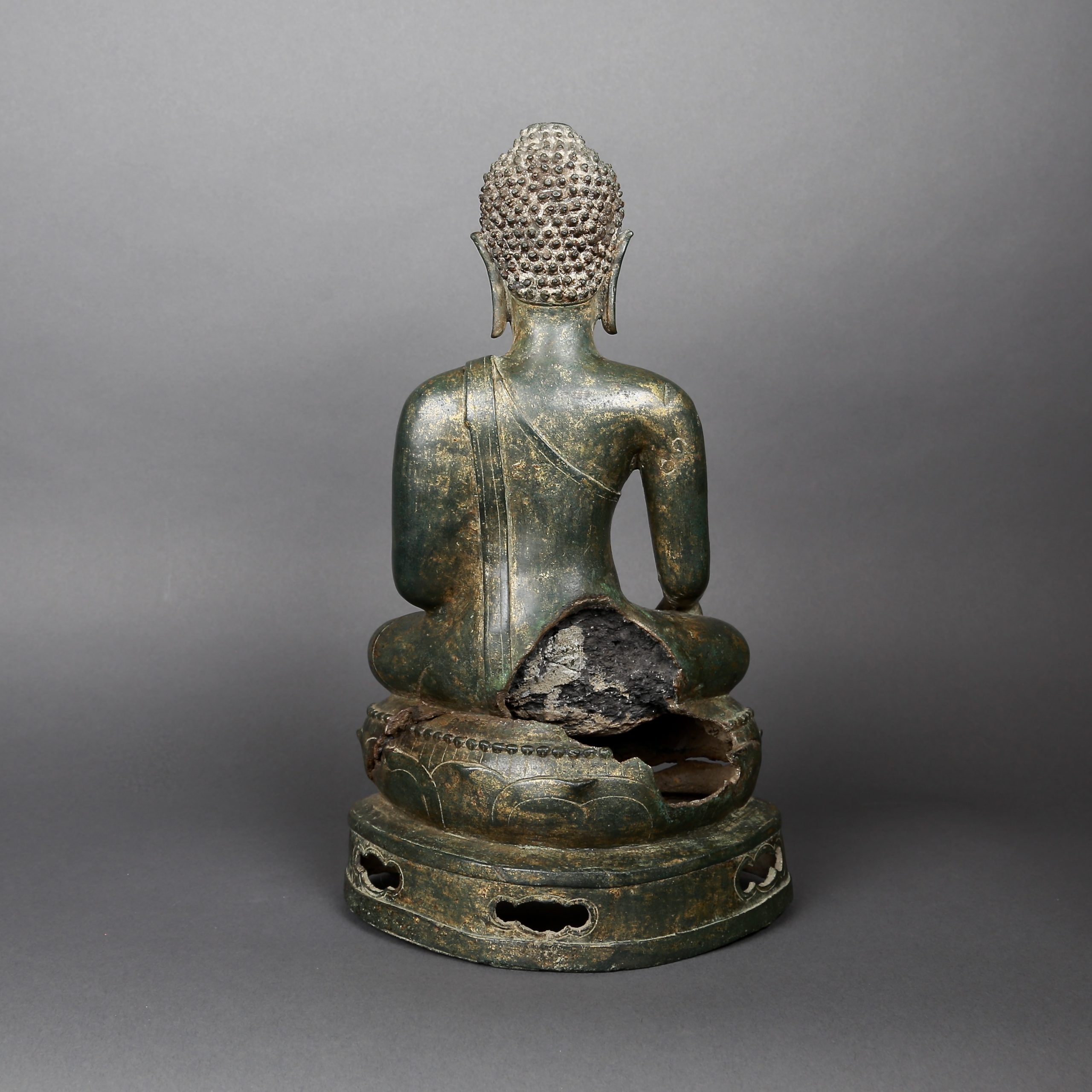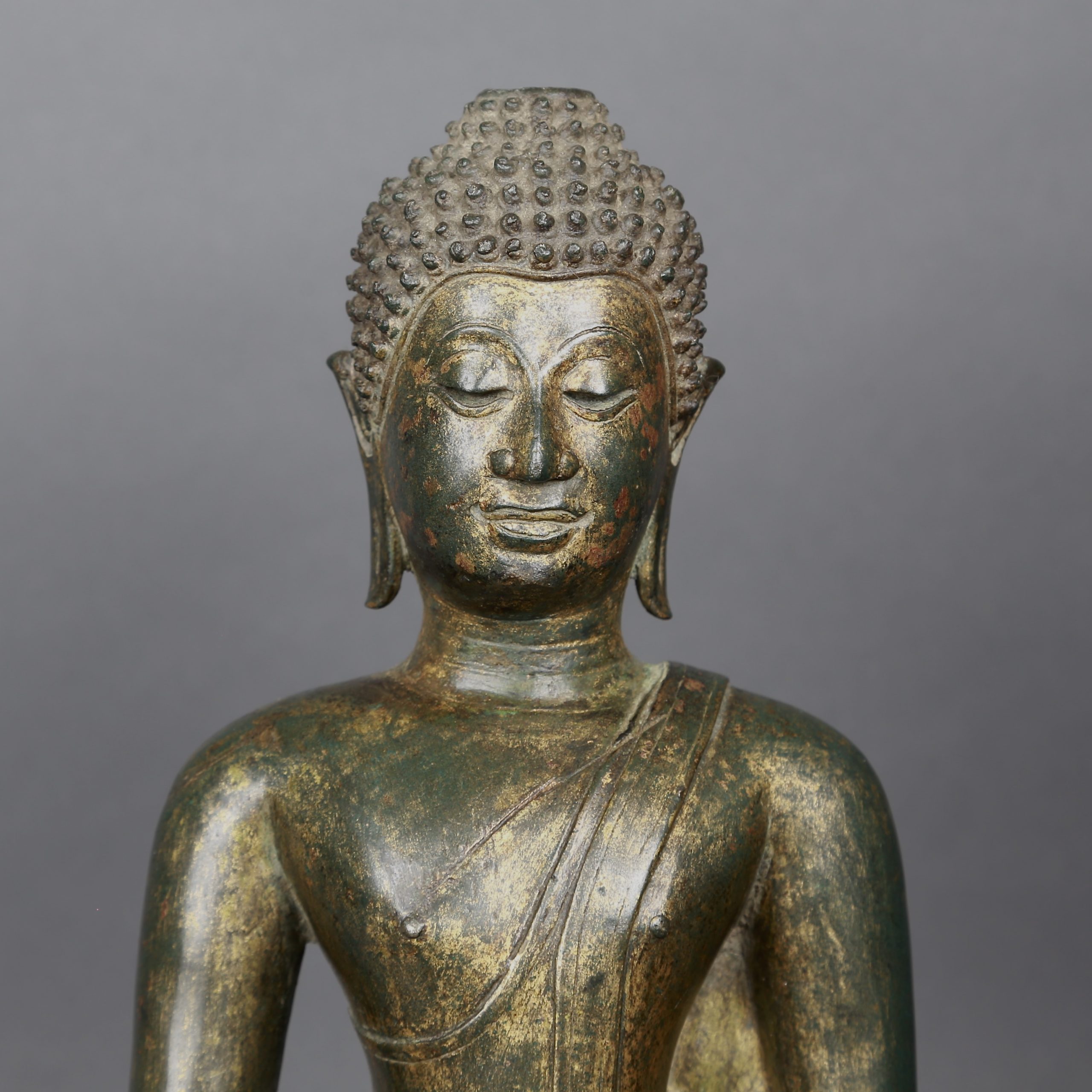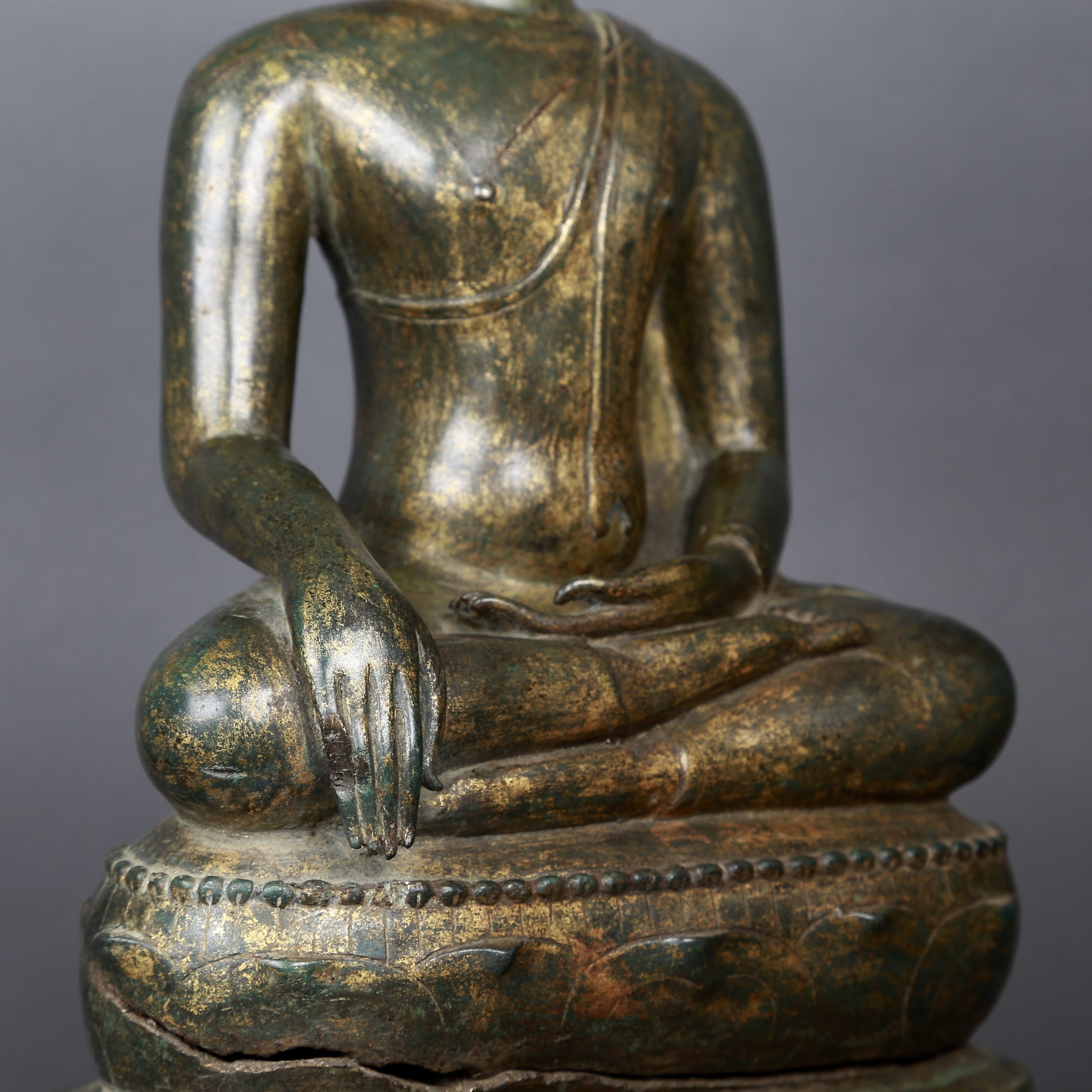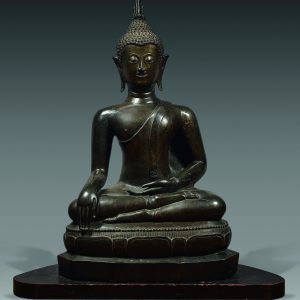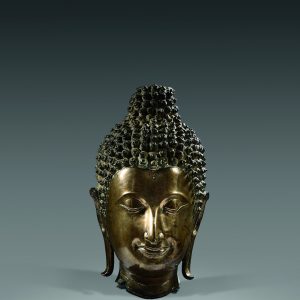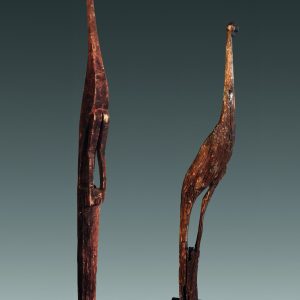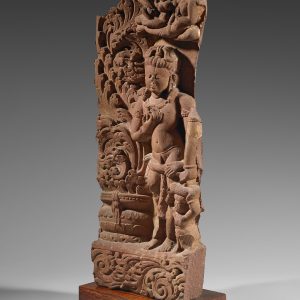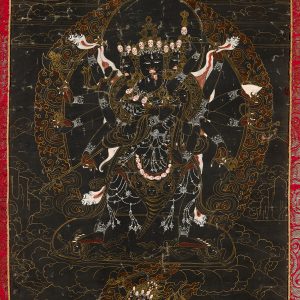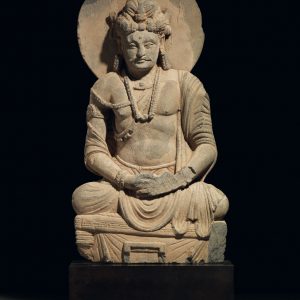Seated Māravijaya Buddha
Bronze
Thailand
Circa 15th century, Kingdom of Chiang Saen (14th-16th century)
H. 33 cm or 13 in
Description
Chiang Saen, a charismatic art
In northern Thailand, the city of Chiang Saen, founded in 1327, was the capital of the small vassal Lanna Kingdom with which it shared a varied history. The city was an active centre for bronze-casters who had their own characteristic style. It is thought that Sukhothai casters came north and helped create this particular aesthetic style. Indeed, it has certain traits of the Sukhothai style, such as the slightly hooked nose, the eyebrows arching to the bridge of the nose, and the hair in tiny juxtaposed curls. To this is added the influence of Indian sculpture. The result is a different rendering, closer to the spirit of classical Indian Buddhist statuary, more vigorous, present and majestic. This Buddha is a perfect example. The smoothness of the facial features, the chin, underlined on both sides by an incised line, and the ears with pointed ends bending outwards: all this is characteristic of the Chiang Saen (and Lanna) style.
An aesthetic of serenity
Śākyamuni Buddha is the embodiment of spiritual compassion, and this bronze demonstrates this nature in a very beautiful way. The face is noble, well-balanced and graceful. The eyes with half-closed eyelids underline his serene meditation. Finally, the modelling is handled with great care and there is an obvious harmony in the proportions of the body and in the facial features.
A fundamental iconography: Māravijaya Buddha
In iconographic terms, Śākyamuni Buddha is depicted here at the moment of his Awakening. This occurs while he is seated, here on a lotiform base and an openwork pedestal, in the so-called “noble” attitude, with his right leg folded over his left leg. This is an absolutely fundamental moment in Buddhism: he then touches the earth with his fingertips and sketches the gesture of “Calling the Earth to witness” (bhūmisparśa mudrā). At this moment Buddha is indeed victorious over Māra (Māravijaya), the demon of death and temptation, who was trying to distract him from his meditation. He thus achieves Enlightenment and shows his good faith in having vowed to bring deliverance to all beings.
Covered with a green patina and beautiful remains of gilding, the piece has an extremely decorative character.
Provenance: Private collection, France.

